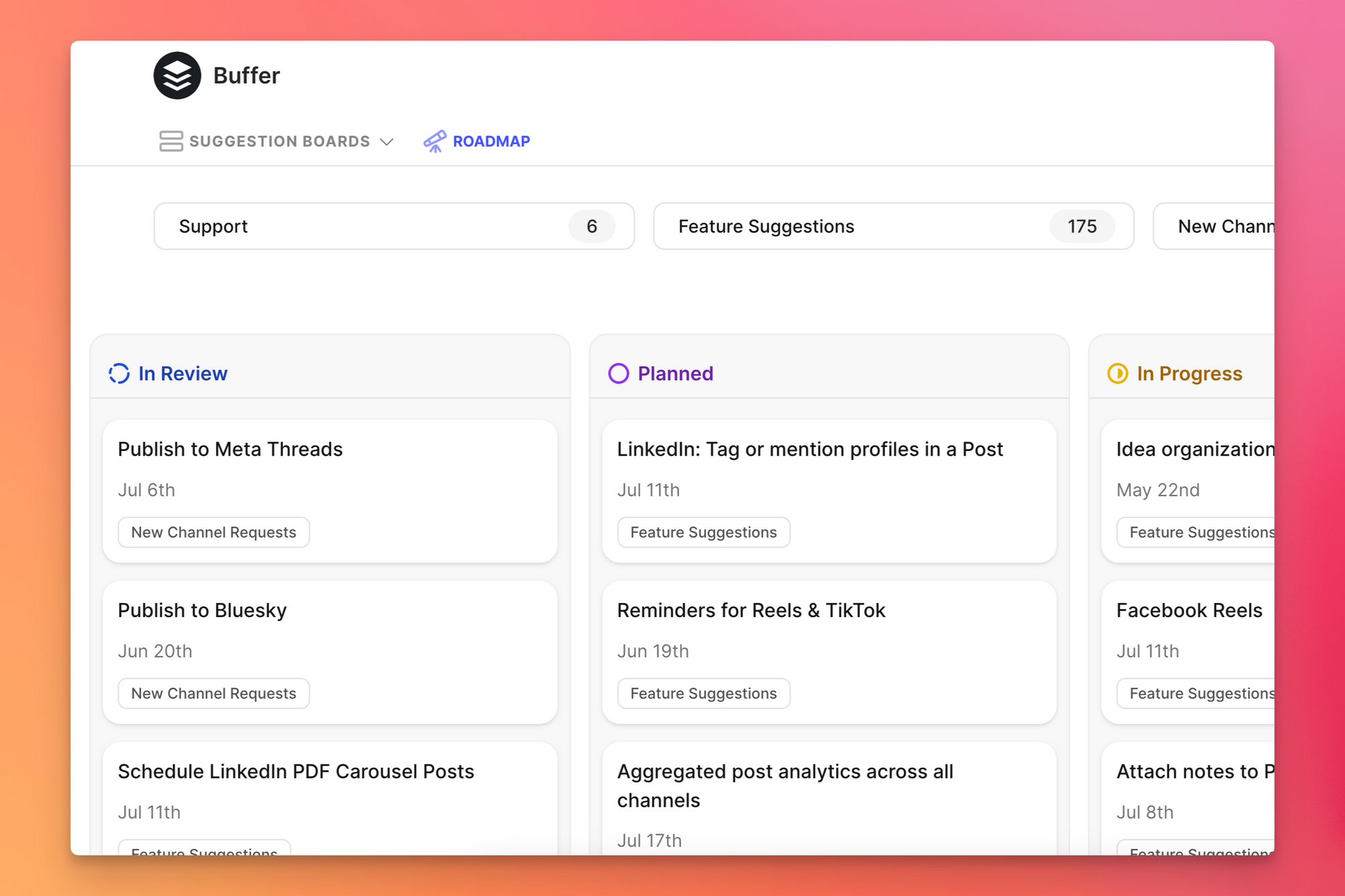Introducing Our New Roadmap: Buffer Suggestions

At Buffer, we are very fortunate to receive hundreds of feature requests every month. Our community is eager to help us improve, and it’s an absolute blessing.
We’ve experimented with different processes for incorporating user feedback and ideas into our product and keeping our community informed of real-time updates, but it can be challenging to do that well.
In the spirit of transparency, it’s important to us that we let folks know when their requests are being worked on, whether their idea is technically possible, or if there are other things we need to prioritize.
Today, I’m excited to share the next evolution of building together with our community, Buffer Suggestions.
Read on for the backstory of how we got here and why we're so excited about our new feedback hub and transparent roadmap.
Our first transparent roadmap
Nearly eight years ago, we launched the first version of our transparent product roadmap.
It was a public Trello board with product suggestions from users organized by stage of development. Anyone could vote and leave comments on a suggestion.

To submit a suggestion, you'd have to fill out a Typeform that was embedded on our website.

We connected this Typeform to an internal Slack channel so that we could keep an eye on all submissions and have discussions about them.

Finally, if we decided to explore a feature request, we would add it to the transparent roadmap. Because of the volume of requests we received, only a very small percentage of requests would make it to the roadmap.
It wasn't the best process
This system of collecting and managing feature requests worked fairly well, but over time we started to identify some flaws.
Duplicate feature requests.
Because we didn't publicly share every feature request, we ended up getting the same request from different people over and over again.
Identifying who requested the feature.
When considering whether to build a new feature, it is helpful to know who the feature is for. Currently, there was no way for us to connect a feature request to the user who shared it, beyond manually looking up their email address in our database.
Keeping users informed.
After submitting a feature request, the user didn’t receive any follow notifications to let them know about the status of the request. Did we see it? Is it being worked on? Has it been declined? With such a large number of requests, it was virtually impossible to keep everyone posted on how their request was being handled.
A renewed focus on community and a new task force
This year, we identified our community as a priority for our team.
Why?
We have a small marketing budget and no salespeople. Therefore, we rely heavily on people having positive experiences with our product and our team and then recommending us …read more
Source:: Buffer Blog












